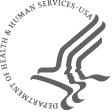Atherosclerosis and Vascular Inflammation – AVI

AVI reviews applications addressing the pathobiology of the blood vessels, including inflammation of the vascular system, atherosclerosis and aortic aneurysms. There is an emphasis on endothelial and smooth muscle cell biology, macrophage biology, immune cells, and metabolic disorders. The effects of major risk factors such as diabetes, liver disease, aging, and smoking on the vasculature are considered. Most studies use animal systems and cell cultures, integrated with human subject approaches.
Review Dates
Topics
- Vascular diseases such as atherosclerosis, abdominal aortic aneurysms, vascular calcification, atherothrombosis, vasculitis. Vascular effects of metabolic processes, including hyperlipidemia, obesity, adipose tissue inflammation, liver disease, diabetes and insulin resistance.
- Endothelial pathophysiology in vascular inflammation, arterial stiffening, and atherosclerosis. Effects of turbulent blood flow, vascular wall mechanics, shear stress response, mechanotransduction. Oxidative stress and endothelial dysfunction: reactive oxygen species (ROS), reactive nitrogen species (RNS), nitric oxide (NO), and endothelial nitric oxide synthase (eNOS). Lymphocyte-endothelial interactions, vascular inflammation. Cell-matrix interactions.
- Smooth muscle cell phenotypes and role in vascular inflammation, aortopathies, aortic aneurysms, atherosclerosis, arterial stiffening, vascular calcification, and vascular aging.
- Innate and adaptive immune mechanisms in vascular inflammation and atherosclerosis. Neutrophils, macrophages, monocyte subsets, T-cells and leukocytes. Cell migration, cell signaling, cytokines and chemokines, signal transduction.
- Lipoproteins in the vascular system and vascular disease: function, metabolism, and oxidation. Cholesterol metabolism and transport. Macrophage activation and regulation; foam cell formation; atherosclerotic plaque stability, rupture and erosion.
- The gut microbiome, lifestyle choices. Effects of the environment on the vascular system, exposure to toxins, drugs, nutritional components.
- Gene expression and regulation involved in the pathobiology of the blood vessels; noncoding RNAs, post-translational modifications, epigenetic mechanisms.
Shared Interests and Overlaps
There are shared interests in aging with Aging Systems and Geriatrics (ASG). Applications that emphasize atherosclerosis-related mechanisms of vascular aging are reviewed in AVI. Applications that emphasize comorbidities including atherosclerosis and vascular inflammation as components with other geriatric syndromes are reviewed in ASG.
AVI and Hemostasis, Thrombosis, Blood Cells and Transfusion (HTBT) have shared interests in thrombosis. Applications that emphasize thrombosis in terms of atherosclerotic plaque rupture will be reviewed in AVI. Applications that emphasize all other thrombosis related subjects will be reviewed in HTBT.
AVI and Integrative Vascular Physiology and Pathology (IVPP) have shared interests in vascular inflammation and vascular responses due to environmental and physiological changes. Applications that emphasize blood flow, circulation, and hypertension will be reviewed in IVPP. Applications that addressing the role of hemodynamics in vascular inflammation and in aneurysm formation and rupture will be reviewed in AVI.
AVI and Therapeutic Development and Preclinical Studies (TDPS) have shared interests in cardiovascular inflammatory disorders. Applications that emphasize mechanisms of action towards identifying potential therapeutic targets and/or delivering therapeutic agents aimed at treating cardiovascular inflammatory disorders such as atherosclerosis, vasculitis, myocarditis will be reviewed in TDPS. Applications that emphasize mechanisms of action of cardiovascular inflammatory disorders such as atherosclerosis, vasculitis, myocarditis will be reviewed in AVI.
AVI and Clinical Integrative Cardiovascular and Hematological Sciences (CCHS) have shared interests in atherosclerosis and inflammation of the vascular system. Applications that emphasize focus on clinical aspects of atherosclerosis and vascular inflammation in humans and human samples will be reviewed in CCHS. Applications that emphasize the basic and translational aspects of these topic areas in cellular and animal models will be assigned will be reviewed in AVI.
AVI and Nutrition and Metabolism in Health and Disease (NMHD) have shared interests in lipoproteins and cholesterol. Applications that emphasize the role of cholesterol, lipoproteins, and fatty acids - their synthesis, degradation, metabolism, utilization, and interorgan flux and turnover will be reviewed in INMP. Applications that emphasize lipoproteins and cholesterol in atherosclerosis, interactions of lipoproteins with vascular cells, the function of apolipoproteins and apolipoprotein gene expression will be reviewed in AVI.
AVI and Basic Mechanisms of Diabetes and Metabolism (BMDM) have shared interests in the investigation of adipose tissue depot biogenesis and remodeling. Application that emphasize on the modulation of adipocyte differentiation and function by vascular cells will be reviewed in BMDM. Applications that emphasize the understanding vascular cells, atherosclerosis, or vascular inflammation in the context of obesity will be reviewed in AVI.
There are shared interests in inflammation with Innate Immunity B (IIB). Applications that emphasize the basic aspects of innate immunity and inflammation may be reviewed in IIB. Applications that emphasize the inflammation of cardiovascular system may be reviewed in AVI.

